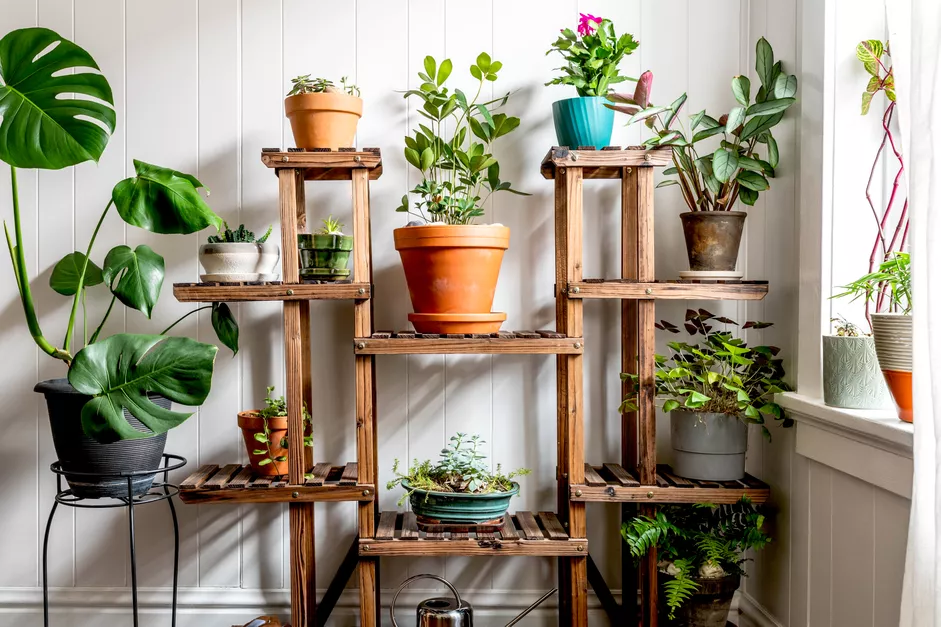If you don’t have access to an adequate outdoor area but still want to grow a variety of vegetables, herbs, or other plants, you might make an indoor garden instead.

What you put in your indoor garden will be determined by the reason for growing the plants, your experience, and the available conditions. This beginner’s guide will teach you everything you need to know about indoor gardening.
What exactly is indoor gardening?
Even if you have more than one or two plants in pots on a windowsill, indoor gardening does not have to be particularly elaborate or complicated. It is commonly thought of as growing a variety of plants indoors that would normally be grown outside, such as fruit, vegetables, herbs, or flowers.
Indoor gardening can be less time-consuming and more successful if you have the proper room and setup. It is easy to control the temperature and other environmental factors to ensure your plants grow. You only need to choose plants that are appropriate for the environment in which you intend to cultivate them.
If you get the circumstances correct, you can have access to items like vegetables or herbs all year, unlike in many outside gardens where the growing season is determined by the temperature.
Common Indoor Gardening Styles
Many plant aficionados use indoor gardening to be creative and cultivate a wide variety of plant collections, whether it’s a tropical rainforest or an edible garden. However, some of the most prevalent types of indoor gardens are as follows:
- Designs for hydroponics If your outside soil is unworkable, you don’t have time to handle weeds and pests, or you want to save water, this is the solution. Hydroponic systems allow you to grow high-quality herbs and vegetables all year.
- Gardening with herbs Even in the dead of winter, if you have a sunny space in your home, it will be ideal for growing a collection of fresh herbs.
- Collections of air plants Decorative tillandsia are epiphytic plants that do not grow in soil and obtain their nutrition from the air and moisture around them. There are approximately 500 kinds to pick from, and they are well-suited to being cultivated in an indoor garden.
- Terrariums. A glass terrarium is a great way to grow a variety of humidity-loving plants without taking up much space. You can choose low-maintenance plants that are also visually pleasing.
Walls that are alive. If you have limited floor or shelf space, or simply want to brighten up a plain wall in your house, a vertical living plant wall may be the way to go. Just make sure you choose plants that have similar maintenance requirements because you will be watering them all together.
Plant Care in an Indoor Garden
The circumstances your plants will need will differ based on the style of indoor garden you intend to create and the individual species you choose. Here are some general guidelines to follow when caring for them.
Light
The location of your indoor garden will be determined by the light requirements of the plants. Plants grown indoors will never receive the same amount of direct bright sunshine that they would receive outside; even sunlight coming through a window is less powerful than it is outside. If you don’t have any natural light in your apartment, you may require grow lights to help produce the appropriate circumstances for significant sun-loving plants. If you have truly shade-loving plants, keeping them away from windows is essential.
Soil
If you aren’t using a hydroponic system or collecting air plants, your indoor garden will thrive in a loose, well-drained potting mix. The mix can be customized according on what you’re growing, but it’s usually made up of peat moss, vermiculite, and perlite. This mixture absorbs moisture quickly and does not compress easily. However, because it dries out quickly, it is not suitable for moisture-loving plants such as ferns.
Water
Of course, each plant produced indoors will have different watering requirements. Overwatering, on the other hand, is one of the most common issues with indoor gardening. Root rot kills a lot of indoor plants.
